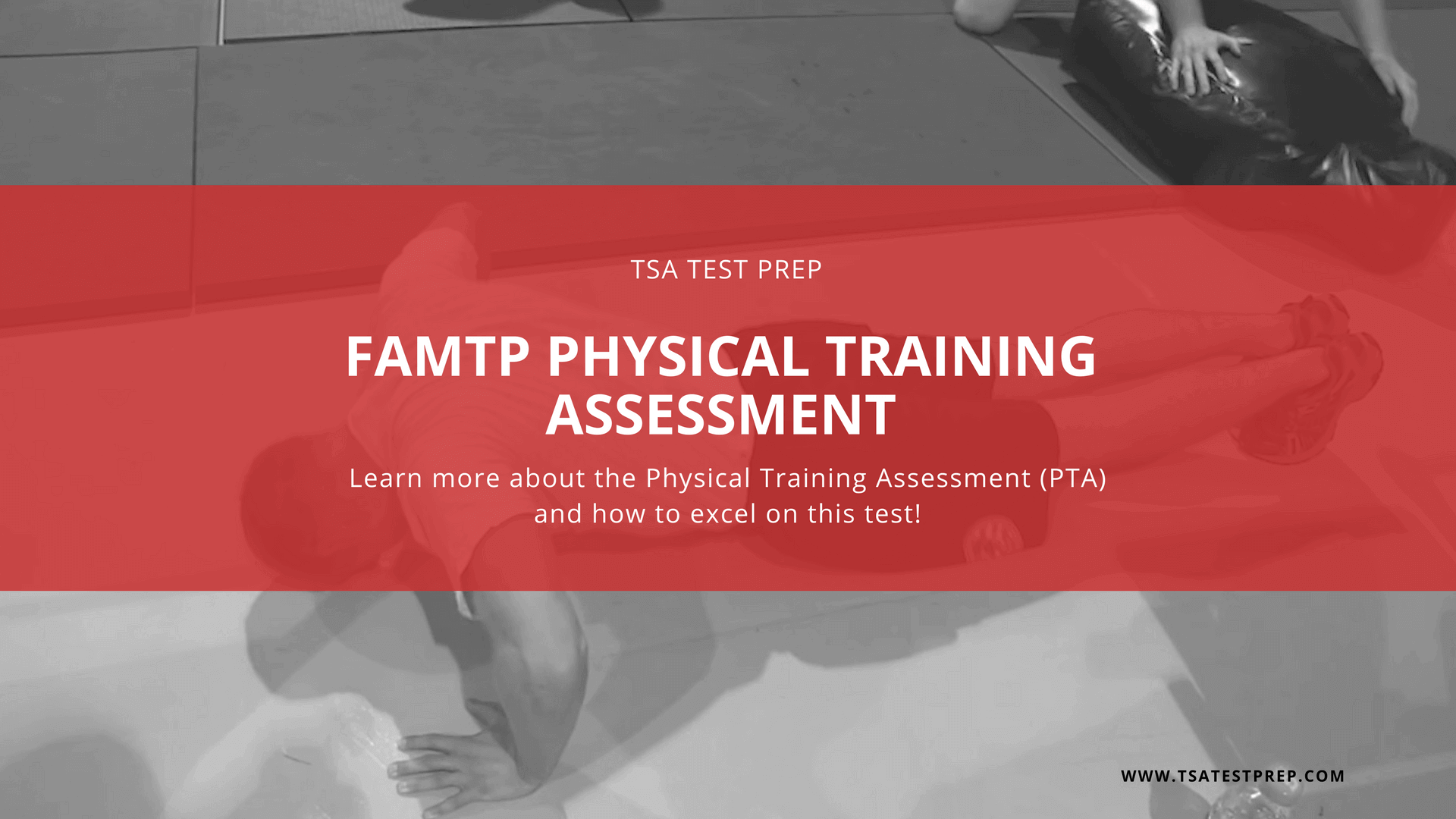
FAMTP Physical Training Assessment
The TSA makes each Federal Marshal Agent candidate undergo a Physical Training Assessment (PTA) in order to give candidates a taste of the physical requirements expected of them Federal Air Marshal Training Program (FAMTP). The objective of the PTA is to ensure that candidate’s selected for training at the FAMTP are fully prepared for the rigorous daily fitness routine, and in best possible shape to participate in the FAMTP.
What is on the Physical Training Assessment (PTA)?
The Physical Training Assessment (PTA) is administered by a Physical Fitness Coordinator (PFC) and the test will evaluate the following physical tasks:
The tasks are performed in the order listed above with minimal rest time between tasks. If you are selected to the training program expect to face more Physical Training assessments.
Learn More About the Federal Air Marshal Test Battery
What is Involved in the Pull-up Assessment Protocol?
The Pull-Up Assessment is used to measure how long the upper arms, shoulders and upper back muscle group can continue to function with strength over an interval of time. This is the first task in the PTA. You will be required to grasp the pull-up bar in your grip of choice. Once a grip is chosen you can not change your approach. You will be required pull your body up chin over the bar and then lower yourself with your elbows fully extended. If you do not lift your chin over the bar, this repetition won't count. Once you let go of the bar you will not be allowed to remount.
Pull- Up Score Chart
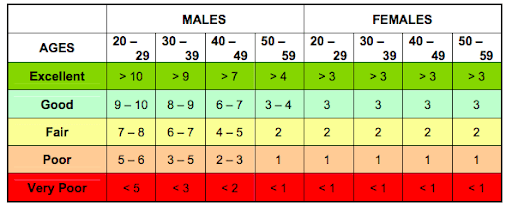
What is Covered on the Sit-up Protocol Assessment?
The Sit-Up Assessment measures you abdominal strength over an interval of time. You will be tested on how many sit-ups you can perform in a one minute interval. One sit-up is when you engage from the ground position and touch your elbows to your knees. You can only rest in the elbows to knees position. If you do not maintain proper form that repetition will not be counted.
Sit-Up Score Chart
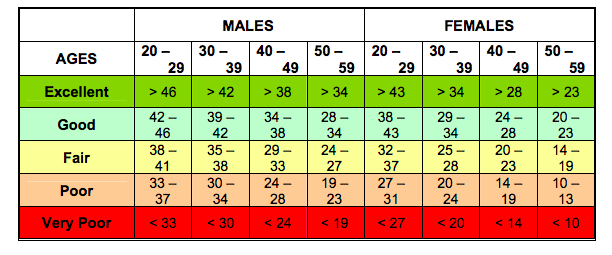
What is involved in the Push-up Assessment Protocol?
The Push-Up Assessment measures the chest, shoulder, arm and back muscle strength over an interval of time. You will be required to perform as many push-ups as you can in one minute. You will need to engage in a front-leaning position with your hands placed right outside the straight line down from your shoulders. Your body must be aligned straight looking forward. You will start from an elbows extended position and lower your body down parallel to the ground until you are at least at distance of a clenched fist below your chest. You will then return to an elbows fully extended position and this is considered one repetition.
Push- Up Score Chart
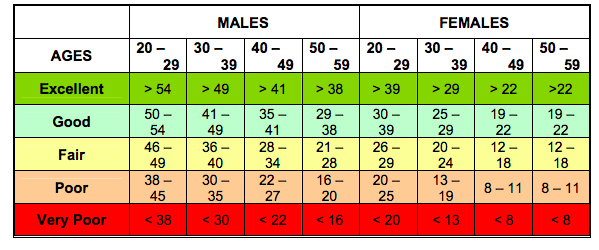
What is involved in the 1.5-Mile Run Assessment Procedure and Protocol?
The 1.5-Mile Run Assessment measures your aerobic fitness.
The 1.5 Mile Run is done either on an indoor or outdoor track where the distances are outlined.
The track is flat and either asphalt, blacktop, or bike paths. You are being tested on how fast you can run in a certain amount of time.
The time is recorded in minutes and seconds.
Mile Run Score Chart
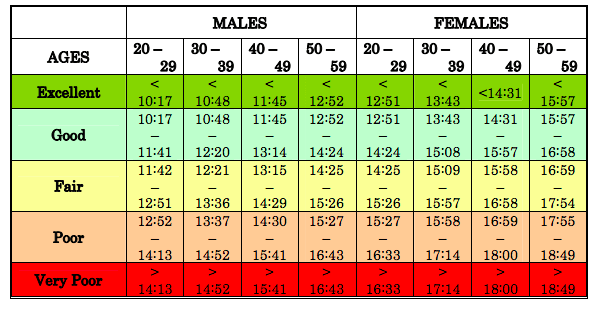
Practice for the Federal Air Marshal Physical Training Assessment with this handy TSA exam study guide (PDF).
FAQs for the Physical Training Assessment
What is the maximum rest time between intervals?
There will be no more than five minutes of rest between each protocol.
How is the Physical Training Assessment Scored?
The Office of Training and Workforce Programs requires that all applicants take the fitness test. Even though the test is required, there is no minimum passing score.
That being said, the fitness evaluation score is factored in when considering an applicant for the position.
If you are accepted to the Federal Air Marshal Training Program you will be expected to go through a rigorous physical training program.
The purpose of the PTA is to ensure that you can handle such a program.
How Can I Prepare for the Physical Training Assessment?
Start training using training exercises. Check out this list of possible exercises:
- Partnered Assisted Pull-Up
- Negative Pull-Up
- Crunches
- Seated Leg Tuck
- Knee push-ups
- Interval Runs
- Hill Running
- Long slow distance runs
FAM Physical Training Assessment Test Tips
- Don’t forget to warm-up and cool down when you are preparing. A warm up prepares your body and a cool down prevents cramping and helps circulation.
- Focus on training all the major muscle groups
- When exercising always perform the movements through the full range of motion.
- Work through the positive and negative phases of training.
- Focus on opposing muscles for strength development. Meaning work on abdominals in conjunction with your lower back.
- Use proper breathing techniques, exhale in any positive page and inhale during the negative phase.
- Ensure that you are training in progression. Increase the severity and amount of exercises in intervals. Make sure you factor in rest and recovery time between training programs.
- Try to specify your training to target specific results. Think about which area your are trying to strengthen and develop a training plan to match it.
- Ensure that you are drinking water. You need to replace fluids lost through exercise.
- Make sure you are wearing adequate footwear with good support, arch and fit.

Have a Question? Now You Can Ask TSA Test Prep!